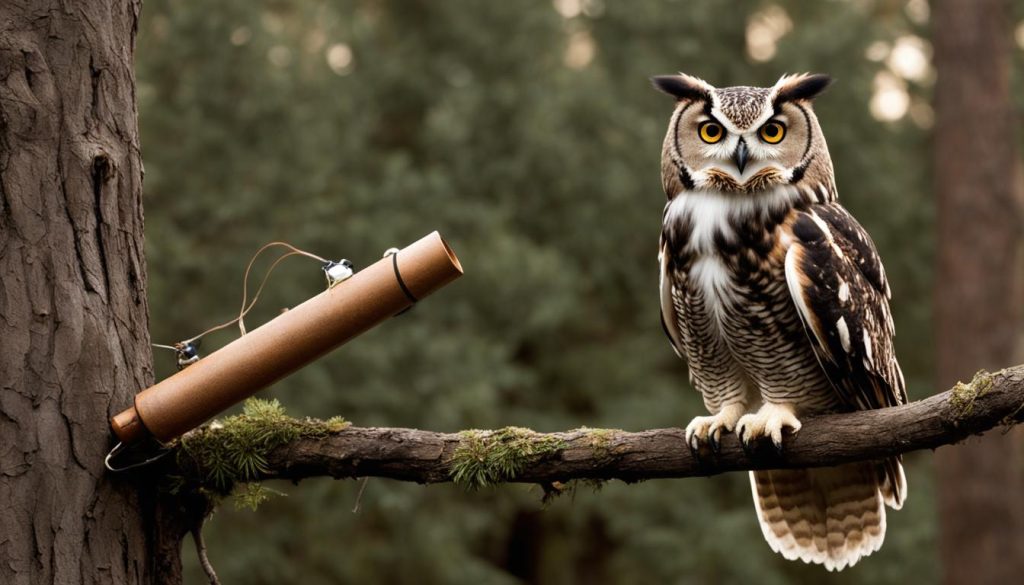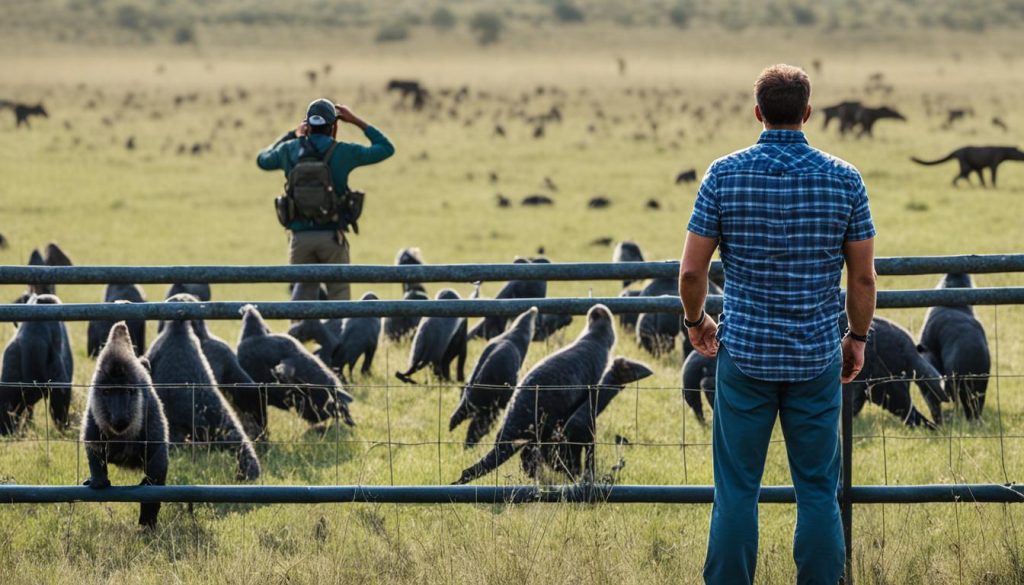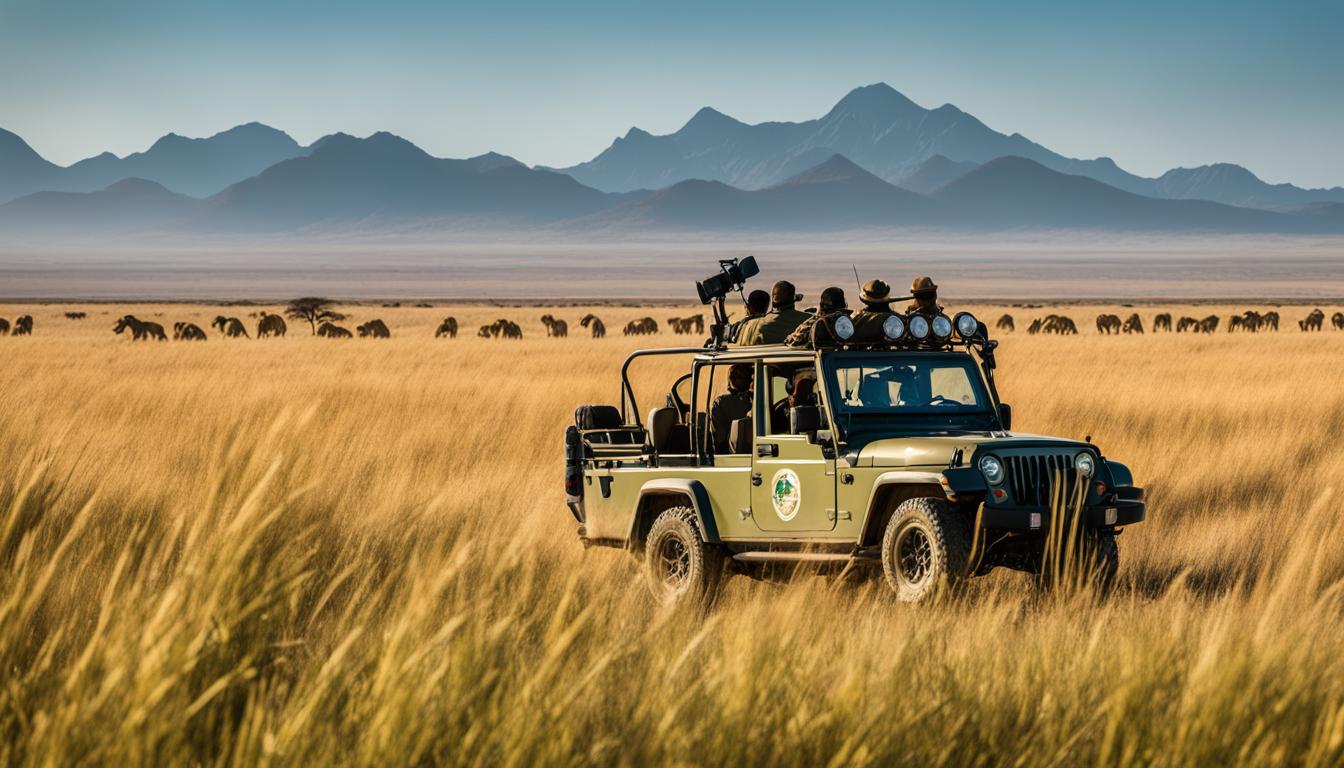Wildlife photography is an exhilarating journey, especially when it comes to capturing the essence of predators in their natural habitats. Photographers are drawn to the challenge and excitement of photographing these mighty creatures, seeking to preserve their untamed beauty and behavior through stunning images. In this article, we will delve into the allure of photographing predators and the ethical considerations that photographers should keep in mind.
Key Takeaways:
- Wildlife photography offers a thrilling experience, especially when focusing on predators in their natural habitats.
- Photographers aim to capture the fierce beauty and behavior of predators through stunning images.
- Ethics play a crucial role in wildlife photography, ensuring the well-being of the animals being photographed.
- Guidelines for ethical wildlife photography include avoiding flash, respecting natural behavior, and not disturbing or harassing the animals.
- One controversial practice is owl baiting, which raises ethical concerns and potential harm to predators.
The Ethics of Wildlife Photography
In the world of wildlife photography, ethical considerations are paramount. As photographers, we have a responsibility to capture captivating images while also prioritizing the well-being of the animals we photograph. Ethical wildlife photography involves adhering to guidelines and principles that promote responsible practices and conservation efforts.
Here are some important guidelines to follow:
- Avoid using flash: Flash photography can startle and distress animals, causing them unnecessary stress.
- Minimize disturbance: Respect the natural behavior of wildlife and avoid actions that could alter or disrupt their natural habitat.
- Keep a safe distance: Maintain a safe distance from the animals to ensure their comfort and minimize any potential harm.
- Do not harass or provoke: It is essential to observe animals from a respectful distance and avoid any actions that could harass or provoke them.
By following these guidelines, photographers can ensure that their practices are ethical and considerate of the animals’ welfare. Additionally, several trusted sources provide valuable insights and tips on ethical wildlife photography.
According to Audubon’s guide to ethical bird photography, patience and respect are key when photographing wildlife. National Geographic also offers a comprehensive guide on ethical wildlife photography, covering various aspects of responsible practices.
Creating a Positive Impact
When photographers prioritize ethical wildlife photography, they contribute to the conservation and preservation of these incredible animals and their habitats. By respecting their natural behavior and environment, we can raise awareness and foster a deeper appreciation for wildlife among viewers.
Now, let’s take a look at a visual representation of the ethical considerations in wildlife photography:
| Guideline | Description |
|---|---|
| Avoid using flash | Flash photography can startle and distress animals, causing them unnecessary stress. Instead, utilize natural light and adjust camera settings accordingly. |
| Minimize disturbance | Respect the natural behavior of wildlife and avoid actions that could alter or disrupt their natural habitat. Capture their beauty in their most authentic state. |
| Keep a safe distance | Maintain a safe distance from the animals to ensure their comfort and minimize any potential harm. Use telephoto lenses to capture close-up shots without invading their personal space. |
| Do not harass or provoke | Observe animals from a respectful distance and avoid any actions that could harass or provoke them. Allow them to carry on with their natural activities undisturbed. |
By adhering to these guidelines and considering the ethical implications of our actions, we can engage in wildlife photography that is both visually stunning and ethically responsible. Let’s capture the wonders of wildlife while ensuring their well-being and preservation.
Baiting Predators: A Controversial Practice
One controversial practice in wildlife photography is owl baiting, where photographers use live mice or toy mice to lure owls into performing for the camera. This practice is considered unethical by many fellow photographers, birders, and natural resource managers.
Baiting can expose owls to potential illnesses like salmonella carried by mice, increase the risk of bird-vehicle collisions, and habituate owls to rely on humans for food. It is important for photographers to recognize the potential harms and ethical concerns associated with baiting predators.

“Using bait to lure owls into performing for the camera is crossing a line. It compromises their health and well-being, creating an unfair advantage for photographers,” says wildlife photographer Jane Cooper.
The Impact on Owl Health
Owls are exposed to potential illnesses when baited with live mice, especially if the mice harbor diseases such as salmonella. The close contact between the owl and the bait increases the risk of transmission, putting the owl’s health at stake.
Increased Collision Risk
Owl baiting can also lead to increased bird-vehicle collisions. When owls are habituated to rely on humans for food at baiting sites, they may become less cautious near roads or vehicles, making them more vulnerable to accidents.
Unnatural Dependency
Another concern surrounding owl baiting is that it habituates owls to rely on humans for food, disrupting their natural hunting and foraging behaviors. This dependency on humans can negatively impact their survival skills in the wild.
“Photography should never come at the expense of an animal’s well-being. Respecting their natural behavior and avoiding any form of exploitation should be our priority as wildlife photographers,” emphasizes natural resource manager Jack Nelson.
Balancing Safety and Photography in the Wild
When photographing predators in the wild, the safety of both the photographer and the animals is of utmost importance. Wildlife photographers need to assess situations carefully and make responsible choices to avoid unnecessary risks. This includes maintaining a safe distance, respecting animal behavior and boundaries, and prioritizing the well-being of the animals over getting the perfect shot.
By practicing effective risk management and prioritizing safety, photographers can capture incredible images while minimizing harm to predators and themselves. It is important to remember that the preservation of wildlife and their habitats should always take precedence over any photograph.
Responsible wildlife photography involves understanding the natural behavior of predators and being adaptable in different environments. This enables photographers to anticipate potential risks and make informed decisions. It is crucial to remain patient and observant to avoid disturbing the natural balance of the ecosystem.
One key aspect of wildlife safety is maintaining a respectful distance from animals. This not only ensures the safety of the photographer but also allows predators to behave naturally without feeling threatened or stressed. Respect their space and use long-range lenses or binoculars to capture close-up shots from a safe distance.
Protecting Wildlife Habitats
Responsible photographers should also be mindful of the impact their presence can have on wildlife habitats. Avoid trampling on vegetation and sensitive areas. Stay on designated paths or trails to minimize disturbance to the environment and reduce the risk of accidentally stepping on nests or burrows.
“As wildlife photographers, it is our responsibility to be advocates for the animals we photograph. We must prioritize their well-being and conservation, ensuring that we leave no trace behind.” – Jane Foster, Wildlife Photographer
Planning and Preparation
Prioritizing safety and responsible photography requires thorough planning and preparation. Research the predators you plan to photograph, their behavior, and the locations where they are commonly found. Understand the local regulations and guidelines for wildlife photography, and obtain any necessary permits or permissions.
Being prepared with the right equipment is also essential. Pack essentials such as a first-aid kit, extra batteries and memory cards, and appropriate clothing for varying weather conditions. These preparations ensure that you can focus on capturing remarkable images while minimizing risks.
Joining Wildlife Photography Workshops
For photographers seeking to improve their skills in wildlife safety and responsible photography, joining wildlife photography workshops can be invaluable. These workshops provide hands-on experience and guidance from experienced photographers who prioritize wildlife protection. You will learn about various techniques, ethical considerations, and risk management strategies to enhance your photography journey.
Remember, being a responsible wildlife photographer means ensuring the safety of both yourself and the animals you photograph. By practicing risk management, respecting wildlife habitats, and continuously educating yourself, you can create stunning images while contributing to the preservation of these awe-inspiring predators.

Conclusion
Photographing predators in the wild presents an exciting opportunity to capture the awe-inspiring beauty and essence of these magnificent animals. However, it is crucial for photographers to approach this practice with utmost ethics and responsibility. By adhering to ethical guidelines, considering the potential impacts of certain photography techniques, and prioritizing wildlife safety, photographers can make a positive impact on the conservation and preservation of predators in their natural habitats.
Responsible practices in wildlife photography involve respecting the boundaries and behavior of the animals. This means avoiding intrusive actions that may disturb or harm them. By maintaining a safe distance and allowing predators to act naturally, photographers can create authentic and meaningful images that showcase the true essence of wildlife.
Furthermore, ethical considerations extend to avoiding practices like baiting predators. These techniques can have detrimental effects on the animals’ well-being, leading to potential health risks and disruption of their natural behaviors. It is important for photographers to recognize the ethical concerns associated with such practices and opt for alternative, non-invasive methods of capturing stunning images.
Ultimately, wildlife photography is not just about obtaining breathtaking visuals; it also carries the responsibility of being a steward for these creatures and their habitats. By embracing ethical considerations and responsible practices, photographers can showcase the beauty of predators while contributing to their long-term conservation efforts.
FAQ
What is wildlife photography?
Wildlife photography is the practice of capturing images of animals in their natural habitats. It often involves photographing predators and other wild creatures in their natural behavior.
Why is wildlife photography considered thrilling and rewarding?
Wildlife photography is considered thrilling and rewarding because it allows photographers to capture the fierce beauty of predatory animals and preserve their behavior in stunning images. It offers a challenge and excitement that draws photographers to this practice.
What are the guidelines for ethical wildlife photography?
Guidelines for ethical wildlife photography include avoiding the use of flash, not disturbing or harassing the animals, and respecting their natural behavior. Several sources, such as Audubon’s guide to ethical bird photography and National Geographic’s guide on ethical wildlife photography, provide valuable insights and tips for photographers to ensure their practices are ethical and non-invasive.
What is owl baiting in wildlife photography?
Owl baiting is a controversial practice in wildlife photography where photographers use live mice or toy mice to lure owls into performing for the camera. This practice is considered unethical by many fellow photographers, birders, and natural resource managers due to the potential harms and ethical concerns associated with the practice.
What are the potential risks of owl baiting?
The potential risks of owl baiting include exposing owls to potential illnesses like salmonella carried by mice, increasing the risk of bird-vehicle collisions, and habituating owls to rely on humans for food. These harms pose a threat to the well-being of both the owls and the overall ecological balance.
How can photographers ensure the safety of predators and themselves when photographing in the wild?
Wildlife photographers can ensure safety by maintaining a safe distance, respecting animal behavior and boundaries, and prioritizing the well-being of the animals over getting the perfect shot. Practicing responsible risk management and prioritizing safety measures are essential in minimizing harm to predators and themselves while capturing incredible images.






